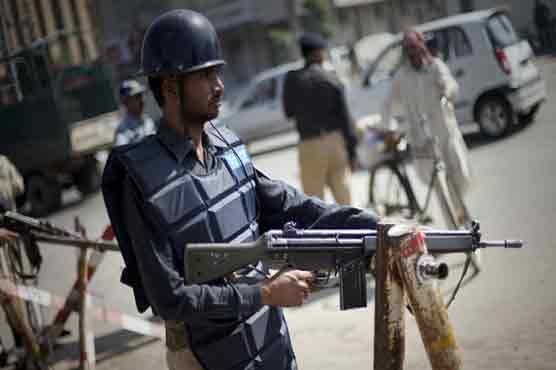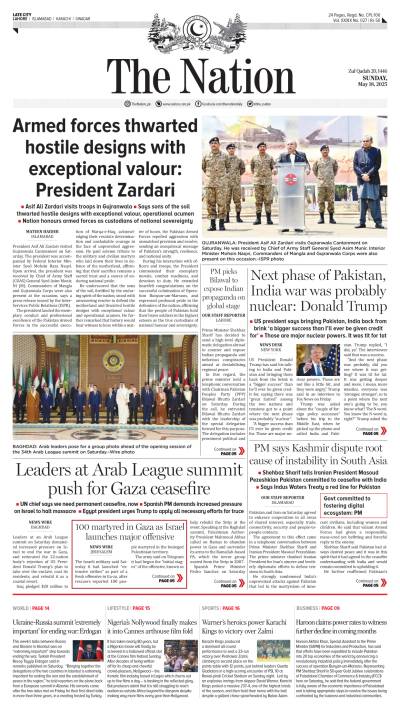LAHORE - Police stations have no funds for stationery and renovation in the Punjab province where the ruling PML-N has jacked up police spending by almost 100 percent in last five years. Even the police investigators have to bear the cost of investigations at their own due to scarcity of funds and the lower staff has to beg the notable of the areas to run the day-to-day affairs of the police station.
Most of the cops’ stations lack computers, photocopy machines, and stationery as the department has been facing dearth of staff amid rapid urbanisation.
Despite allocation of billions of rupees over the years, the police department is yet to compile the computerised data of its total staff.
The department, last year, had decided to computerised the service record of all employees after the “biggest bogus staff scandal” surfaced in the provincial police. At least seven police officials were arrested for employing over 136 fake cops in the country’s largest police service. The gang had been actively operating in the Central Police Office for years with impunity.
The police budget of Rs51.82 billion in fiscal-year 2011-2012 swelled to record Rs94 billion in the current fiscal year 2015-2016 and is likely to touch Rs100 billion during the next fiscal year. The government in last five years launched various training and development projects including 100 Model Police Stations in the Punjab province but failed to introduce any visible change on ground. According to police budget analysis (2015-2016), the police pays and allowances consume 80.13 percent of the total allocation while the petrol charges costs 7.57 percent. Similarly, at least 2.08 percent budget is allocated for police training institutions. Only 10.22 percent of the total allocation is left with the police department for all other operating expenditures.
Critics say they believe the funds are not transferred to police stations. Hence, the policemen have to arrange the resources at their own to run the day-to-day affairs of a police station in the province. In early 2012, the PML-N government had announced establishment of 100 MPSs with the motto of making the police corruption-free and the province crime-free. As per the plan, the provincial government had to set up these model police stations in two phases with the provision of modern infrastructure, computer technology, and the best resources to the law enforcing agency. But the government failed to honour its commitment.
The Police sources say the project had been shelved because of lack of funds and resources. The policemen serving in the so-called model police stations are not being paid salaries as they had been promised. A a proposed monthly grant of Rs100, 000 to the stations house officer (SHO) of MPSs in big cities and Rs15, 000 per month allowance had not materialized too. “We are getting salaries like other police officials. No increase, no allowances, and no benefits,” said a police officer, who is serving as an SHO at a model police station in Lahore.
The officer, who spoke on the condition of anonymity, further said that the lower staff had to beg the notable of the area to run the day-to-day affairs of the police station. “We have to purchase stationery at our own. We have to maintain the official record at our own”.
Although Rs120 million were allocated in the police budget this year yet the investigators have to bear the cost of investigations at their own. “We are not being paid (by the department). We have to bear the cost of investigation and raids since the department never paid the expenses to investigation officers,” a police investigator told The Nation. This year, the government announced another allocation of Rs4 billion for the Safe City.
Under this project, the government has been planning strict surveillance of miscreants and offenders by using modern tools including CCTV cameras. Quick police response in cases of crimes and terror is also among the salient features of this initiative. As per government plans, this project of surveillance system should have been completed in Lahore by December 2015 and in Rawalpindi, Gujranwala, Multan, and Faisalabad cities in 2016. But the authorities are still unable to activate this key project.
While presenting budget 2015-16 in the provincial assembly in June, Punjab Finance Minister Dr Ayesha Ghaus Pasha said: “In order to get rid of the traditional police culture (Thana culture) and to introduce a pleasant atmosphere by redressing the public grievances, at least 80 police service centers are also being set up across the Punjab province.” The minister maintained that additional funds would be utilised to equip the police with latest weapons and technology besides providing best training to the policemen.
In December, Punjab Inspector General of Police Mushtaq Ahmad Sukhera said that project of Computerised Complaint Handling Centre (CHCs) would be extended to 141 police stations. Following the ‘successful’ launching of the computerised complaint handling centers in Lahore, the police department decided to replicate this pilot project in five other districts. At least 141 centres will be established in the police stations of five districts including Lahore, Gujranwala, Rawalpindi, Faisalabad and Multan. A police spokeswoman said the high-tech complaint handling centres are being established in order to improve the police image, maintain the official record, and ensure timely registration of cases, and merit-based investigations.
Last year, the pilot project had been launched at 10 police stations of Lahore including Gulberg, Baghbanpura, North Cantonment, South Cantonment, Model Town, Mustafabad, Sarwar Road, and Defence-A, B, and C police stations. The police department had recruited 83 civilian employees, including 20 women workers. A senior police officer spoke to The Nation on the condition of anonymity and said that the “police department with total strength of 180,669 employees faces dearth of staff.” According to police rules, he said, there must be one police official per 450 persons, whereas, according to the population of the province this percentage becomes one police official per 1250 persons.
Only in 2013, he explained, at least 4226 different protest demonstrations were held whereas 2264 rallies were taken out besides more than 760 sits-in and 513 strikes called by various organizations. The under-staff police had to tackle all challenges and they did it carefully and effectively, he said.






